Contents
- Where does the name Akola come from?
- Why is Kanheri known as Bhutachi Khaneri?
- The Discovery of Akola
- Rudrayani Deviche Kanatle (Rudrayani Devi’s Earrings)
- Sadhguru Gajanan Maharaj
- Sasa ani Kasav (The Rabbit and the Tortoise - Akola’s Version)
- Chakradhar Swami
- Walkeshwar Mandir
- War of Adgaon
- Gold in Patur
- Mhasoba Mandir and Patur Ghat
- Rudrayani Devi Mandir
- Dimple Kavhal’s Story
- Sangola Gaon
- Wedding of Shiva in Rel
- Sources
AKOLA
Stories
Last updated on 3 November 2025. Help us improve the information on this page by clicking on suggest edits or writing to us.
Where does the name Akola come from?
The city of Akola and its fort, known as Asadgad or Asagad, were named after two different individuals. According to locals, Akola was initially fortified by Akol Singh, a local ruler, using mud to protect the village. Akol Singh saw an auspicious sign in a hare chasing a dog, prompting him to build an earthen wall to safeguard the village. In 1697 CE, during the reign of Mughal emperor Aurangzeb, Akola was further fortified by Asad Khan, who later became the Prime Minister (Vazir-e-Azam). The town of Akola was conferred upon Asad Khan, and he constructed a small fort here, which came to be known as Asadgad or Asadgarh. It is suggested that Akola derived its name from the word "adka," meaning a marketplace. Akola was once a major trading hub where locals would gather to sell and buy various goods.
Why is Kanheri known as Bhutachi Khaneri?
There is a village called Kanheri in Balapur Taluka, now known as Bhutachi Kanheri. The village earned this eerie name due to a local belief that in the evening, the place becomes haunted. The villagers are so terrified of ghosts that they refuse to open their doors at night, no matter how persistently guests might knock. This fear is so deep-rooted that even in cases of emergencies like weddings or deaths, people avoid visiting the village after dark due to the lack of fast transportation and the villagers' reluctance to let anyone in after nightfall.
During the day, villagers sometimes report strange sightings, such as seeing duplicates of themselves working in the fields. If someone steps out of their home at night for any reason, they might mysteriously vanish, believed to be taken by the ghosts. Pregnant women in particular face many challenges in this village.
The Discovery of Akola
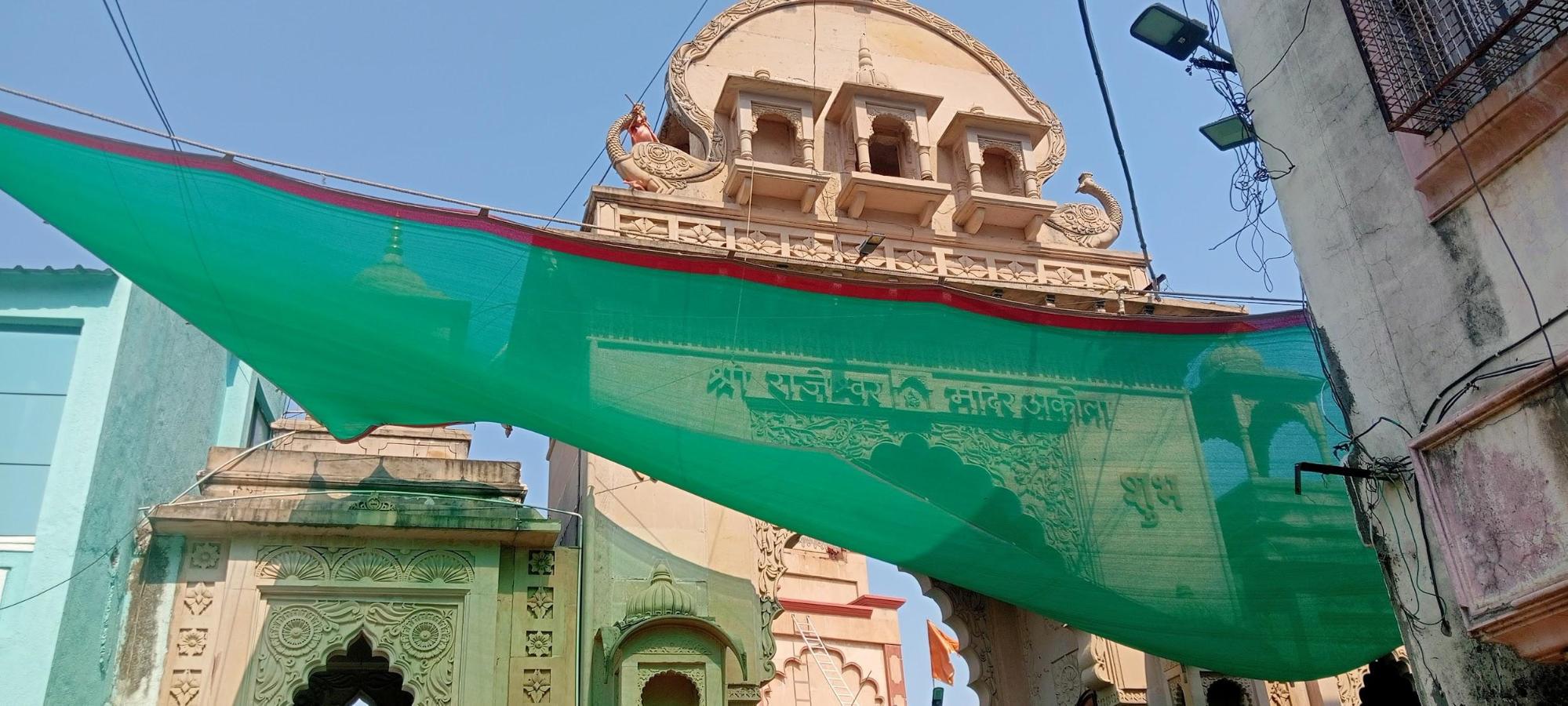
Akola, is a city located in the heart of the Varhad (Vidarbha) region of Maharashtra. The city's past is deeply rooted in the stories of its founders, Raja Akolasimha and his queen. The queen, a follower of Shiva, had undertaken a rigorous vrata to please the Devta. However, the king grew increasingly suspicious of his wife's late-night offerings at the Rajarajeshwara mandir, fearing she might be meeting a lover. Consumed by jealousy, he pursued her one night with an unsheathed sword, determined to catch her in the act of infidelity.
Aware of her husband's intentions, the distraught queen pleaded with Shiva to accept her as the ultimate offering. In a miraculous turn of events, the mandir's Shivalinga cracked open, allowing the queen to enter and imprison herself within it forever, sealing her fate. The city's name, Rajarajeshwar, refers to this very Shivalinga at its core.
Today, situated in the Vidarbha region of Maharashtra, Akola is the third-largest city in Eastern Maharashtra after Nagpur and Amravati. It lies along the banks of the Morna River and has history dating back to ancient times. The city has been ruled by various dynasties, including the Mauryas, Satavahanas, Vakatakas, Chalukyas, Rashtrakutas, Yadavas, and Muslim sultanates such as the Bahmanis and Nizam Shahis.
Rudrayani Deviche Kanatle (Rudrayani Devi’s Earrings)
![Rudrayani Devi’s Sansthan[1]](/media/culture/images/maharashtra/akola/stories/rudrayani-devis-sansthan1-90c68333.png)
Akola, formerly known as Rajarajeshwar Nagar, was the home of the famous Rajarajeshwari, the devi of beauty and delight. Her supernatural presence was felt throughout the district, and her goshti (stories) became an integral part of the local customs.
One such story involved Rudrayani Devi, a powerful devi who once protected the taluka of Patur. According to beliefs, when a disaster struck Patur, Rudrayani Devi threw her earring upon the scene, filling it with heavenly life. This act resulted in the creation of a mandir ornamented with elaborate stone carvings, which served as evidence of her intervention.
The mandir, now a respected site, was thought to guard the taluka against evil and disaster. Believers would go to the mandir to seek blessings and solace from the devi. Today, the story of Rudrayani Devi's earring has been passed down through centuries, as during Navratri festivities the story continues to be repeated by elders.
Sadhguru Gajanan Maharaj
![Sadhguru Gajanan Maharaj[2]](/media/culture/images/maharashtra/akola/stories/sadhguru-gajanan-maharaj2-0f6c2f26.png)
Gajanan Maharaj's connection to Akola is a significant aspect of his story. Though his origins remain shrouded in mystery, Akola played a crucial role in the life and legacy of this Sant.
Gajanan Maharaj was first spotted in the Vidarbha region, specifically in Shegaon. However, his presence and influence soon spread to the nearby city of Akola. Today, a Gajanan Maharaj mandir in Akola can be found near the Engineers Colony, Mothi neighborhood.
According to locals, Gajanan Maharaj frequently visited Akola and the surrounding districts, captivating the populace with his powers and enigmatic behavior. He was known to appear and vanish unexpectedly, and his actions, while often incomprehensible to the common man, were believed to hold deep significance.
One of the most astounding incidents involving Gajanan Maharaj in Akola was his ability to withstand the stings of a swarm of honeybees. When a fire was accidentally lit near a beehive, the agitated bees attacked the gathered crowd. Gajanan Maharaj, however, remained serene, allowing the bees to sting him without showing any signs of discomfort. This remarkable display further cemented the belief that Gajanan Maharaj was a master of the highest order. This extraordinary event, along with numerous others, has become an integral part of the oral tradition surrounding Gajanan Maharaj in Akola.
Sasa ani Kasav (The Rabbit and the Tortoise - Akola’s Version)
Once, a tortoise and a rabbit agreed to race. The tortoise, known for his ambition, felt confident in his ability to outperform the rabbit. He frequently taunted the rabbit, claiming it was insecure and couldn't keep up with him. The rabbit, quiet but intelligent, grew tired of the tortoise's insults and challenged him to a race.
Eager to prove his superiority, the tortoise agreed but insisted on choosing the route. Knowing the tortoise would select a course intersected by a river, the rabbit reluctantly agreed. As expected, the tortoise chose a path along the river, and the rabbit accepted the challenge.
However, the rabbit had a plan: to train hard and become an expert swimmer. The overconfident tortoise agreed to give the rabbit two months to prepare.
For those two months, the rabbit worked tirelessly. He enlisted the help of his friend, a red panda who was an excellent swimmer. The panda taught the rabbit how to swim, and he practiced daily to improve his skills.
On race day, the tortoise was certain of victory. He failed to notice the rabbit's uneasiness, which stemmed from his newfound swimming ability. The fox, tasked with starting the race, cheated by briefly waving the flag in the rabbit's face, giving the tortoise a head start.
As the race began, the rabbit sprinted as fast as he could, knowing he had to outpace the tortoise before reaching the river. To his surprise, the river had become a mere trickle, making it easier to cross.
Upon reaching the water, the rabbit paused briefly to catch his breath before plunging in. Despite being a novice swimmer, he executed an excellent breaststroke and quickly crossed the river.
Emerging from the water, dripping wet, the rabbit dashed towards the finish line. He arrived at the plateau where the other animals were waiting. As they celebrated his victory, the tortoise realized he had lost and apologized for his behavior. The black shadow of arrogance disappeared, and the tortoise came to respect the rabbit's determination and intelligence.
Chakradhar Swami
![Chakradhar Swami[3]](/media/culture/images/maharashtra/akola/stories/chakradhar-swami3-e662d1d4.png)
A respected sant known as Sarvadnya Shri Chakradhar Swami arrived at a modest, unassuming mandir on the outskirts of Akola. He was a teacher renowned for his profound wisdom and ability to guide those seeking his counsel.
As Chakradhar Swami entered the mandir, he was greeted with a warm smile by the pujari, who offered him a cup of tea and a plate of delicious sweets. The sant accepted the offerings graciously, his eyes gleaming with kindness.
As the evening progressed, devotees gathered around Chakradhar Swami, eager to hear his teachings and seek his advice. The sant listened attentively, his eyes closed in contemplation, while visitors shared their experiences and troubles.
A young woman named Kavita approached Chakradhar Swami with tears in her eyes. She had lost her husband in a tragic accident and was struggling to cope with the loss. Chakradhar Swami listened to her story with empathy before offering words of comfort and solace. "Kavita, beti," he said gently, "your husband may be gone, but his love and memories will remain with you. Do not despair, for he is now in a realm of endless peace and joy. Continue to live your life with love and kindness, and you will find that his aatma is always with you." Chakradhar Swami's words deeply moved the listeners, who left the mandir feeling inspired and uplifted. As they departed, they discovered that the sant had vanished, leaving only a faint aroma of sandalwood and a trace of his presence.
The next day, a group of waarkari passed through Akola, seeking refuge and rest. Exhausted from their days-long journey, they stumbled upon the same small mandir on the outskirts of the city and decided to rest awhile. As they entered the mandir, they were greeted by the pandit with the same warm smile, tea, and local sweets. The travelers gratefully accepted the offerings before noticing a humble sant sitting in the corner of the mandir.
It was Sarvadnya Shri Chakradhar Swami, and his presence deeply impacted the waarkaris. They spent the remainder of the day listening to his teachings and seeking his guidance. As the sun began to set, the waarkaris departed, uplifted and inspired by their encounter with Chakradhar Swami. They realized they had been touched by something truly special and left the city feeling peaceful and content.
Walkeshwar Mandir
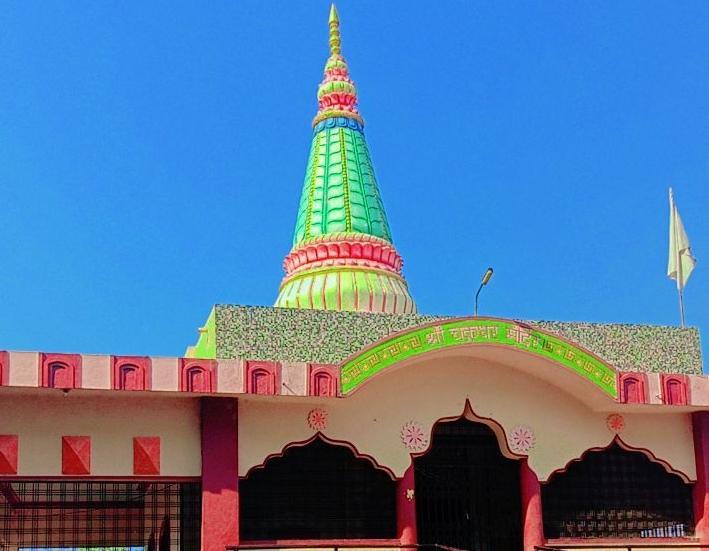
The mandir is located in Alegaon, Patur and dates back to 12 century CE. Though it started as a small structure, the local community has since restored and maintained it over the years. The mandir is dedicated to Shri Chakradhar Swami, who is revered here as Walkeshvar. The story goes that in the 12 century CE, Chakradhar Swami was traveling through Maharashtra. During his visit to Alegaon, he sat under a tree and grew hungry. He requested a bag from a local woman, but she explained that her mother-in-law had counted the supplies, and if she used less for the market, her mother-in-law would scold and possibly harm her.
Hearing this, the Swami understood the woman's dilemma and told her it was alright. However, the compassionate woman decided to share some food with him, even at the risk of facing consequences from her mother-in-law. Later, when the woman went to the market, she had an unexpectedly successful day. Many customers came to her, but she never ran out of the rolls she was selling. She was able to earn a substantial amount of money before heading home.
When the woman's mother-in-law saw the empty baskets, she questioned her. The woman then recounted the encounter with the man under the tree.
War of Adgaon
On November 29, 1803, General Wellesley, also known as General Velastis (later renowned as the Duke of Wellington), arrived in Akola. He was the brother of the then-Governor General and was considered one of the finest generals of his time. He would later achieve global fame for defeating Napoleon in the historic Battle of Waterloo, shattering the French leader's dream of world conquest.
General Wellesley arrived in Akola on November 27, 1803, and departed for Adgaon on November 28 to engage in battle. Daulatrao Shinde, coming from Khandesh via Malkapur, arrived in Vanhad and sought to negotiate with Wellesley to avoid the conflict. However, Wellesley stated that since no negotiations had taken place with the Bhosles, he would proceed with the attack.
Shinde, unwilling to leave the Bhosles to face the British alone, united with his army and stood ready for battle alongside the Bhosles. Shinde's forces were primarily composed of a small cavalry unit, while the Bhosle army was much larger, including cavalry, infantry, and artillery. The Bhosle army, led by Manyabapu, was stationed at Shirsoli village near Adgaon. Wellesley observed the entire Maratha army from the fort of Paturdi (Pathardi). The Maratha forces were spread out between Adgaon and Shirsoli, with their camp located four or five miles away. The area behind the camp was the village of Adgaon, surrounded by horticultural plantations, and in front was a large field, uneven and filled with ditches and drains.
On November 29, 1803, the British army engaged in a fierce battle with the combined forces of Bhosale and Shinde at this location, resulting in a decisive defeat for the Marathas. Following this victory, Wellesley continued his campaign, fighting at Gawilgarh from December 13 to 15, 1803.
Gold in Patur
The events took place in the year 1974, when Indira Gandhi was the Prime Minister of India. During a wedding celebration in Patur, a distant relative of the groom arrived visibly intoxicated. As he stumbled through the festivities, the guests noticed he was carrying gold coins. When questioned, the man claimed the coins had been found in the nearby Bordi river. Excited by the prospect of discovering hidden treasure, the villagers rushed to the river and began digging frantically. Soon, people from across the taluka and even the entire district flocked to the site, all hoping to unearth the rumored gold. The police had to intervene and impose Section 144 (prohibiting unlawful assembly) to control the situation. Investigations by the archaeological department revealed that the gold coins dated back to the Mughal era, specifically the reign of Emperor Akbar. It was believed that a Mughal official tasked with collecting taxes had been transporting a large sum of money through Patur when he was ambushed. To avoid capture, he had dumped the coins into the Bordi river, which was then struck by a devastating flood that swept everything away. Locals claim the flood was caused by the curse of a Sant from Patur, known as Sant Shahbabu. From that day on, the Bordi river became known as the Suvarna (golden) river, as gold deposits continued to be found in its waters, as well as in other nearby rivers like Morna and Purna.
Mhasoba Mandir and Patur Ghat
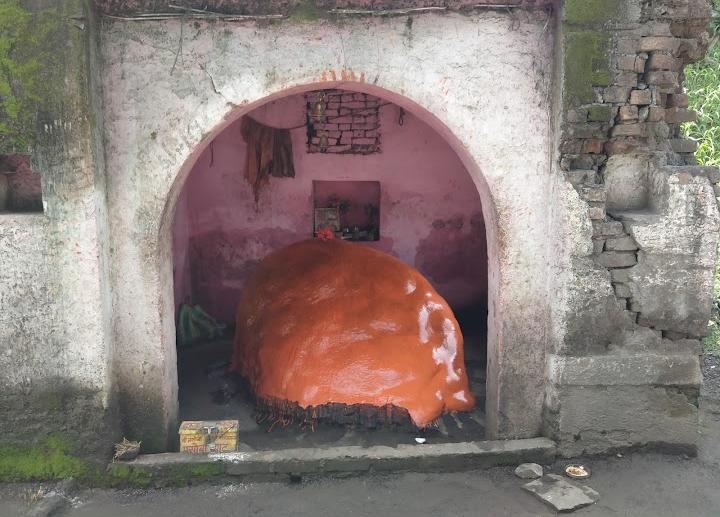
This is a Mhasoba Mandir located along the Patur-Medashi road. Near the mandir, there is a dangerous ghat where many accidents have occurred over the years.
As a way to pray for safe passage, travelers passing through this area would often stop at the mandir and leave coins as offerings. People traveling by bus would even toss coins from the windows as they passed the mandir, leading to a sizable collection of coins accumulating there.
Some men from the nearby villages, who worked as farm laborers in the surrounding fields, noticed the large amount of coins at the mandir. Overcome by greed, they decided to steal the offerings at night. They used the stolen money to indulge in alcohol and meat.
However, the thieves soon faced the consequences of their actions. One of the men fell gravely ill with a severe stomach ailment. The villagers believed this was a curse from Mhasoba, punishing the man for his act of stealing the mandir's offerings.
Despite spending all the stolen money on his treatment, the man's condition only worsened, and he ultimately died a painful death. The locals saw this as retribution for the theft of the coins from the Mhasoba mandir. The incident served as a cautionary tale, reminding people of the importance of respecting religious places and not giving in to greed.
Rudrayani Devi Mandir
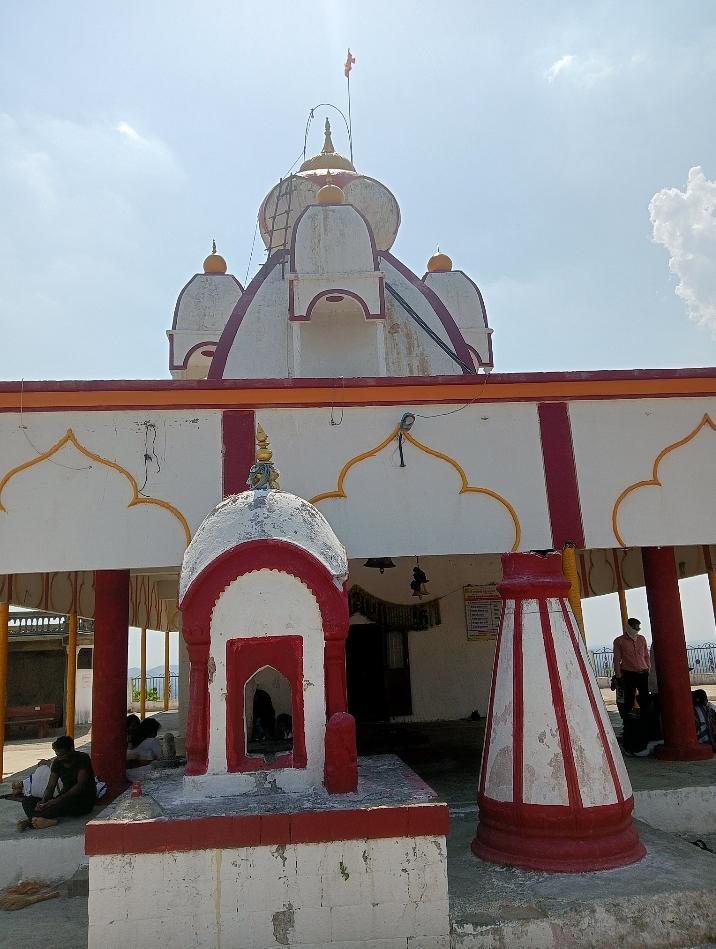
In the village of Chincholi, there stands a Mandir dedicated to Rudrayani Devi. The origins of this Mandir trace back to a fascinating tale. It is said that a Sadhu, while traveling through the Akola region, was struck by the sight of a particularly tall hill. Intrigued, the Sadhu climbed to the top of the hill, where he discovered a magnificent sculptural representation of the Devi. Captivated by this discovery, the Sadhu decided to make the hilltop his abode, dedicating himself to the Devi.
The Sadhu then set about cleaning and preparing the area, eventually calling upon the villagers of Chincholi to help in this sacred task. Devotees from near and far flocked to the site, helping to construct stairs leading up to the Mandir. Over time, the mandir expanded, and a Jatra began to be held at the base of the hill.
One particularly significant event occurred when a family, seeking the blessing of a child, visited the mandir and made a promise to the Devi. True to their promise, the family returned with a daughter, whom they dedicated to the service of the devi. It is from this girl's name that the Devi came to be known as Rudrayani Devi.
Today, the mandir continues to be a popular site, especially during the auspicious occasion of Bail Pola, a festival celebrated in honor of oxen.
Dimple Kavhal’s Story
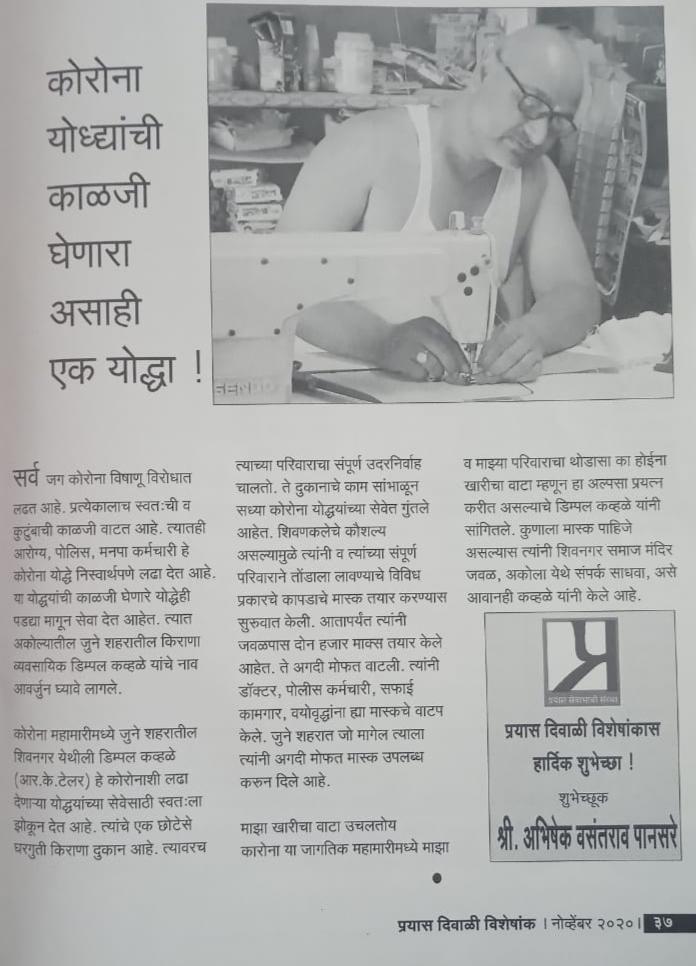
In Akola, a tailor named Dimple Kavhale from Shivnagar June Shahar, runs a shop called R.K. Tailor. This shop is their only source of income, and with his tailoring skills, he has been sewing and distributing masks to the people of Akola free of charge. Dimple has provided these masks to doctors, police officers, cleaners, and workers, making them available to many in June Shahar, Akola. So far, they have distributed over 2,000 masks at their own expense. Dimple expressed, "As a citizen of India, I want to help people. It may be a small contribution, but I'm doing my best to support others."
Sangola Gaon
In the village of Sangola in Akola, a distinctive tradition centers around the local devta While the rest of Maharashtra celebrates Vijayadashami by burning Ravana's effigy, Sangola is known for its elaborate Lankeshwar Puja, a custom that has been maintained for more than 300 years.
The origin of this tradition dates back to a Sant who engaged in deep meditation in the surrounding forests. Under his guidance, many religious rituals were carried out. As his life neared its end, the Sant informed the villagers of his forthcoming departure. To honor him, the villagers decided to create a statue in his likeness and enlisted the skilled Patrat community for the task.
The Sant had resided beneath a tree with ten small branches, known as "fate" in Marathi. Inspired by this, the artisans crafted a statue resembling Ravana, with ten arms, each wielding a weapon, depicting the ten branches. When the villagers attempted to transport the Murthi into the village on a bullock cart, the bulls stopped at the entrance, refusing to proceed. Consequently, the Murthi was placed at the village's entrance, or "ves."
Today, the villagers believe that since the establishment of the Murthi, their village has been shielded from calamities. They also credit the Sant’s blessings for the fact that over 50% of the villagers hold government jobs.
Wedding of Shiva in Rel
In the village of Rel, located in the Akot taluka of Akola, a unique wedding tradition is celebrated by the Koli community. This custom, which dates back approximately 600 to 700 years, involves the marriage of Mahadev and Parvati. Each year, two new families are given the honor of acting as the parents of the groom and bride. The entire event is conducted just like a real marriage, complete with traditional music, including Sanai, Chaughade, and Dhol Tasha.
This wedding takes place during the month of Chaitra, on the auspicious day of Chaitra Shuddha. It is an anti-dowry celebration, with a strong message promoting awareness against dowry and emphasizing the importance of education. Additionally, the village of Rajnapur Kinkheni also organizes a similar wedding for Shiva and Parvati.
Sources
Yadav Kale. Varhadprant Itihas – वऱ्हाडप्रांत इतिहास. Sahyadri Books, Maharashtra.https://sahyadribooks.com/varhadprant-itihas/
Last updated on 3 November 2025. Help us improve the information on this page by clicking on suggest edits or writing to us.